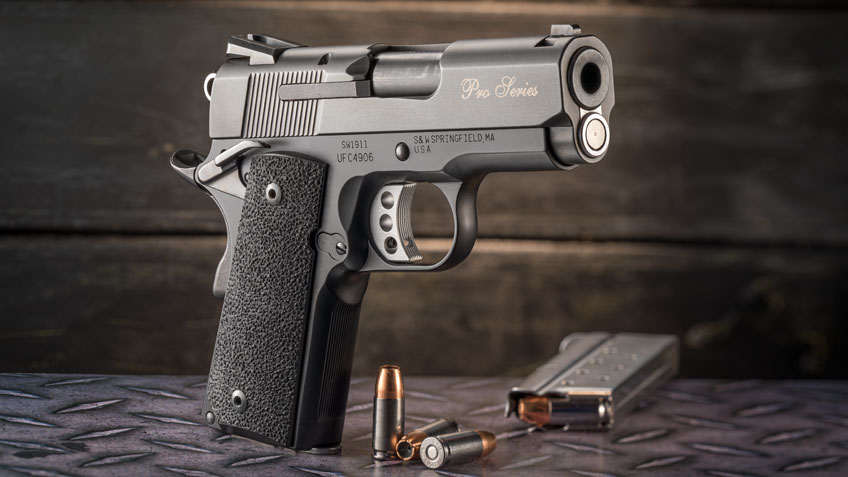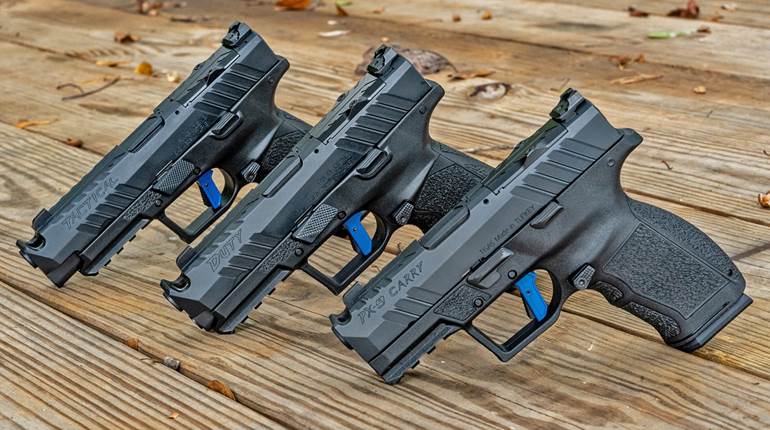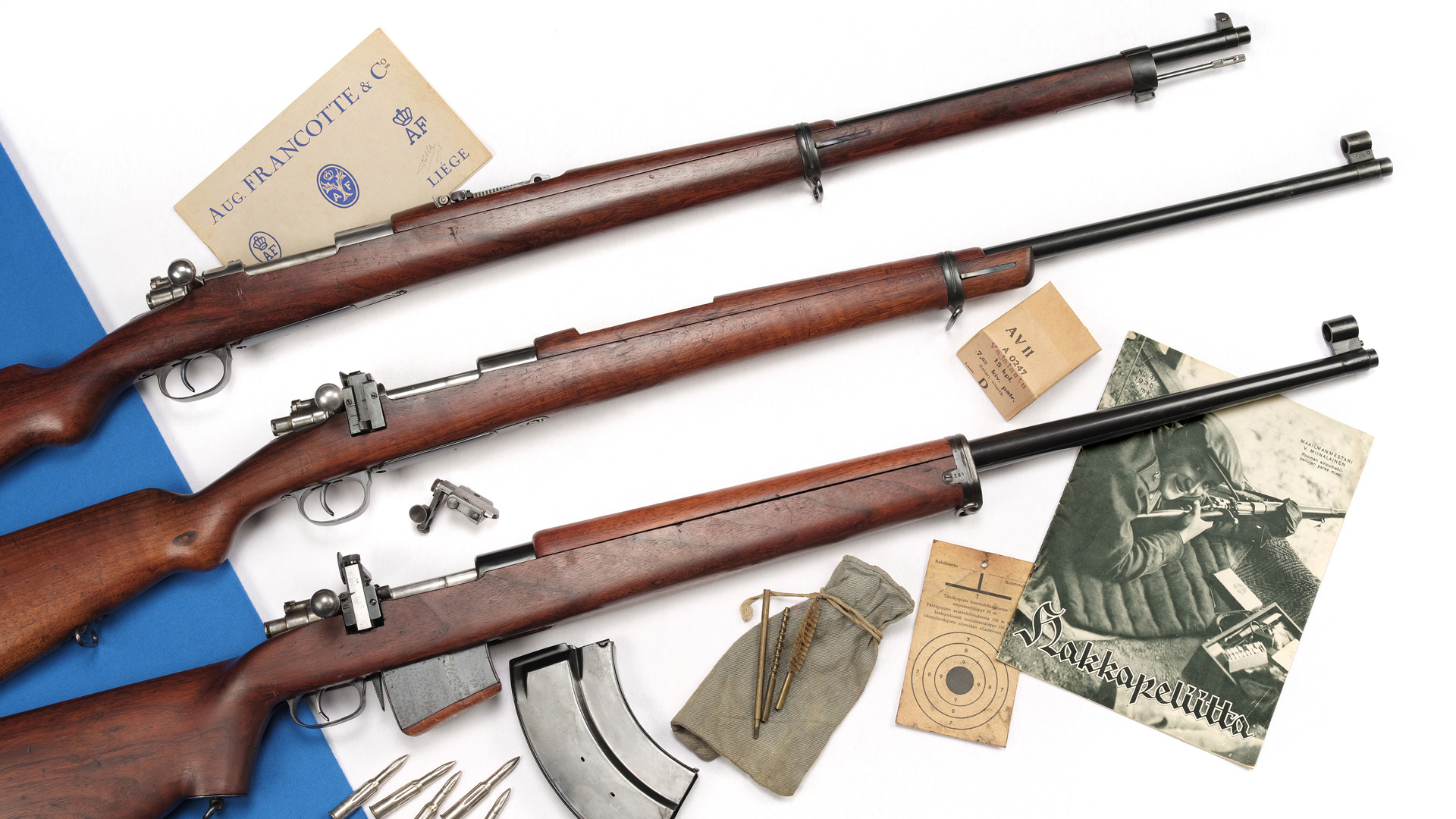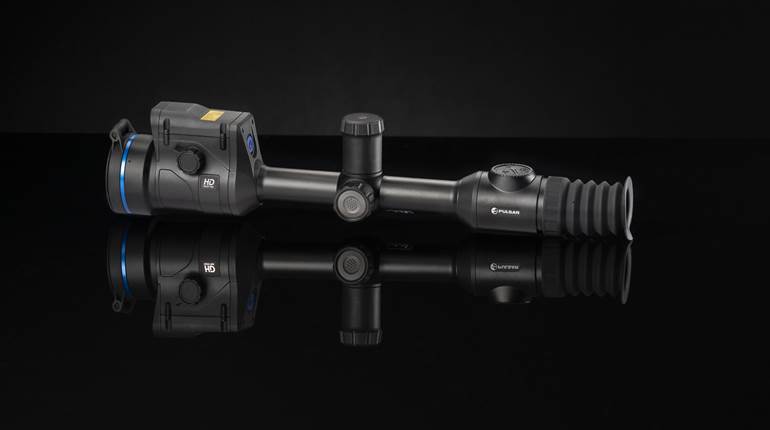
The Smith & Wesson Performance Center SW1911 Pro Series, an Officer-size variant of John Browning’s venerated design, is the Performance Center’s first 9 mm Luger-chambered offering in the platform. An attempt to provide the best of both worlds—the added capacity offered by a smaller-diameter projectile, housed within one of the most popular configurations of pistol ever made—the SW1911 Pro Series’ subcompact dimensions make it ideal as a carry gun.
True to traditional form for Officer-size M1911s, the SW1911 Pro Series is a single-stack semi-automatic, with a grip angle and ergonomics familiar to any M1911 devotee. However, to reduce weight—an important consideration for everyday carry—the frame is constructed from a scandium alloy instead of the more traditional steel, bringing the gun’s empty weight down to only 26 ozs. Further, it features a rounded butt to reduce the chance of snagging on clothing when carrying concealed. To promote a firm grip, both the frontstrap and the mainspring housing are checkered (the mainspring housing being the more aggressive of the two), while the factory stocks are coarsely stippled synthetics.

Moving higher up on the frame, a firmly sprung beavertail grip safety protects the hand from slide bite while simultaneously promoting a high grip. Just forward of this are bilateral manual thumb safeties, though the magazine release can only be actuated from the left side of the gun for right-handed use. We found that reloads could be accomplished with smooth efficiency, as, unlike many Officer-size M1911s, the magazine extends ever so slightly beyond the lip of the magazine well, allowing for full seating and easy retrieval.

Riding atop the frame, a stainless steel slide features rear serrations to aid in racking the pistol. Nested within these serrations on the right side of the slide is an external extractor, slightly oversized for a firmer hold on chambered cartridge rims.
As a finely tuned M1911, the pistol comes with a single-action trigger, and, on average, our sample’s hammer was released after 5 lbs., 15 ozs., of pressure and a crisp break. This would serve the user quite well in a defensive scenario. The unit on our test SW1911 Pro also features an adjustable overtravel stop, as well as three holes cut into the trigger to cut weight.
Out on the range, the pistol ran with the sort of reliability one should expect from an M1911 intended for daily carry, thanks in no small part to the gun’s full-length guide rod. This is further aided by S&W’s inclusion of a dual-recoil-spring system that, rather than nesting two springs together, is based around a stepped design, with a larger spring around a front guide-rod sleeve, and a smaller one running along the narrow rod’s full length.

Lining up shots was easy with the handgun’s popular three-dot sighting setup—a white-dot front sight paired with a two-dot rear, both dovetailed into the slide. We found the pistol to deliver more-than-adequate accuracy for a defensive handgun. Three loads were run through the gun for accuracy testing: Hornady’s 124-gr. Critical Duty +P FlexLock, Speer’s 115-gr. Gold Dot Hollow Point and 115-gr. PMC Bronze FMJ. The Speer Gold Dots performed most accurately, with an impressive average group size of 0.85" at 7 yds. The other two loads also grouped well, with the Hornady Critical Dutys managing a 1.15" average group size, and the practice PMC ammunition producing a 1.70" five-group average. Our chronograph testing revealed velocities between 1012 f.p.s. and 1113 f.p.s.—not bad results for a 3"-barreled subcompact pistol.
We did have one small gripe with our test pistol; in an apparent over-abundance of caution, S&W sprung the grip safety so tightly that an especially firm grip was needed in order to deactivate it. It was not a major concern, and this does not appear to be a common problem with the model in general, but our sample would benefit from a trip to the local gunsmith to lighten things up a bit.

The S&W Performance Center SW1911 Pro Series is an excellent choice for any shooter looking for a carryable M1911, but who is unwilling to put up with the recoil (or ammunition price) of a standard .45 ACP-chambered version. The reliability and accuracy of the pistol makes it a fine option for everyday carry, and its 9 mm Luger chambering makes it pleasant to practice with all year ’round.






































